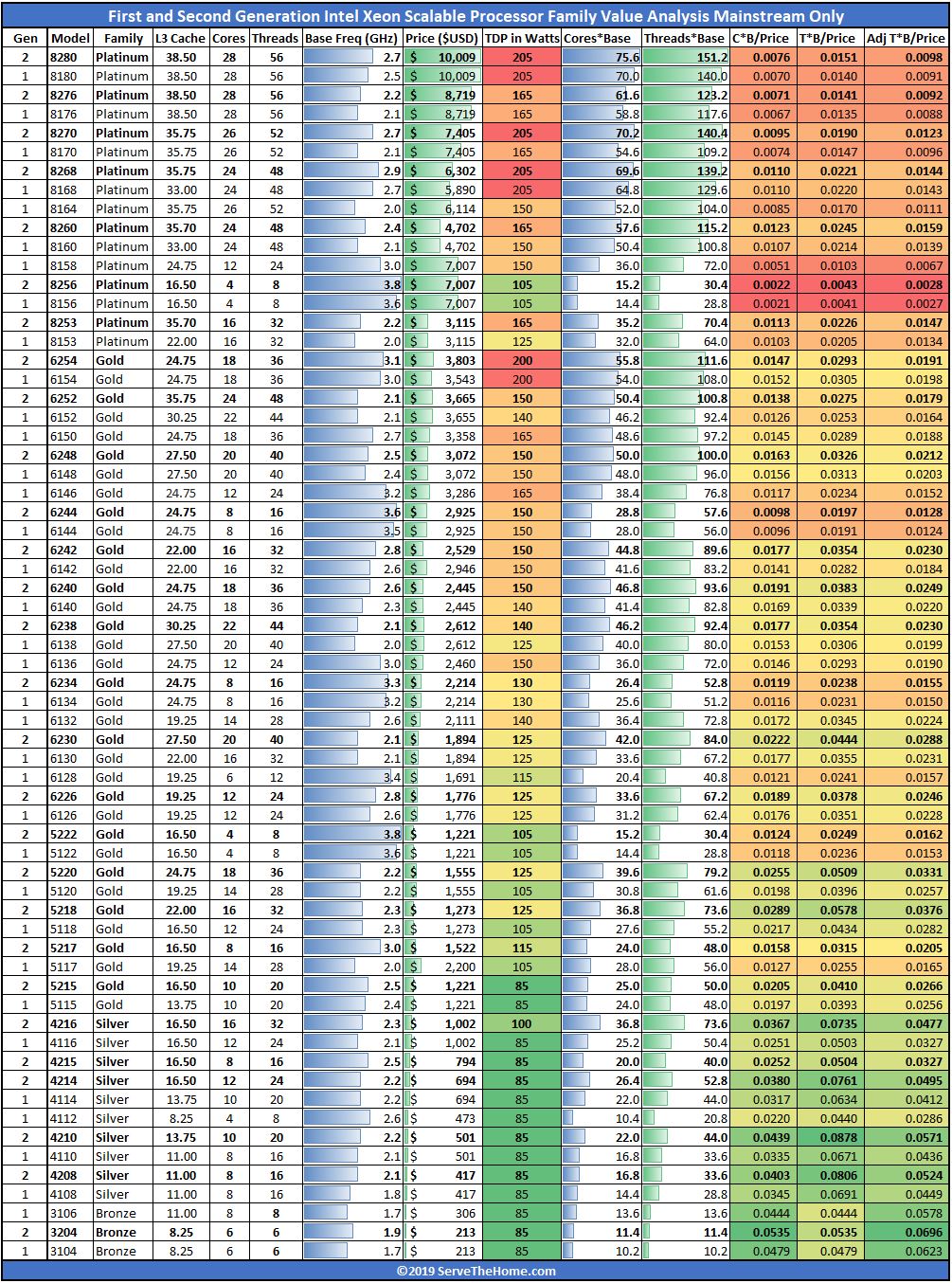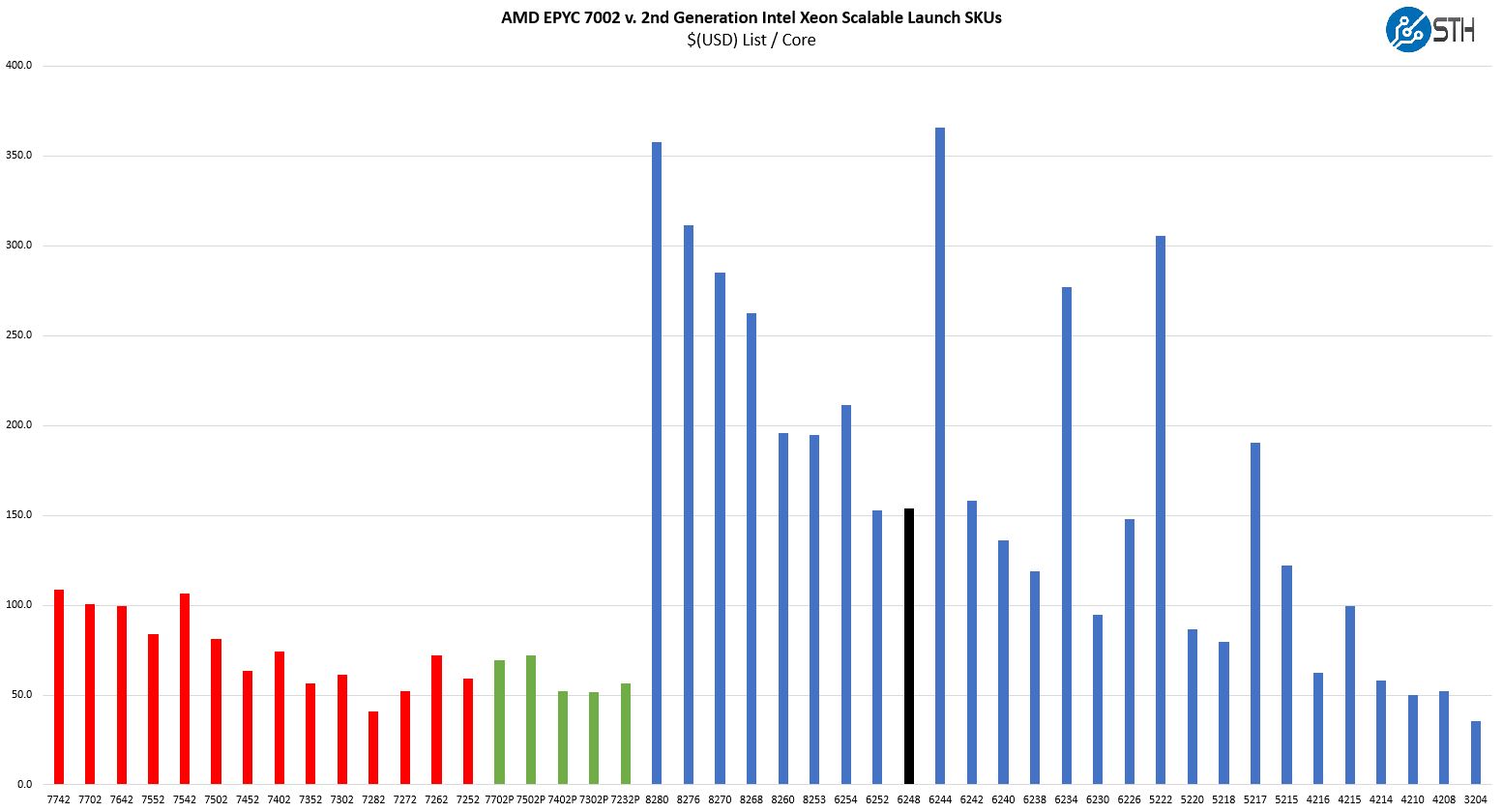Intel Xeon Gold 6248 Market Positioning
Thes chips are not released in a vacuum instead, they have competition on both the Intel and AMD sides. When you purchase a server and select a CPU, it is important to see the value of a platform versus its competitors.
Intel Xeon Gold 6248 v. Intel Alternatives
This is a hard part to place in the lineup. Not because the performance is not as expected. Indeed, performance meets what we would expect from a part with similar specs. Given Intel’s plethora of chip options, the competition a Xeon Gold 6248 faces comes largely within.

We understand that there are application-specific CPUs in the above chart. Still, the Intel Xeon Gold 6248 is actually one of the higher-performing chips between the first and second-generation Intel Xeon Scalable processors. While it only offered a 100MHz bump over the base clocks of the Intel Xeon Gold 6148, a popular HPC chip, that performance bump is welcome.
This review is being written in mid-February 2020, or about 10 months after release. As a result, much has changed. Specifically, between launch and this review, the chips have new competition from AMD in the EPYC 7002 “Rome” series of processors.
Intel Xeon Gold 6248 v. AMD EPYC Alternatives
Since this review is happening after the AMD EPYC 7002 series codenamed “Rome” release, the Gold 6248 faces competition beyond the internal Intel SKU stack. Here is what the mainstream CPUs look like

There are two key takeaways. First, AMD is overall offering competitive chips as we saw in our performance numbers, that are competitively priced. Second, this is one of the better values in the higher-core count and clock speed 2nd Generation Xeon Scalable line’s launch lineup.
Intel has several features here such as DCPMM support, lower TDP, as well as AVX-512 and DL Boost that AMD lacks. At the same time, AMD has PCIe Gen4, more PCIe lanes, and more memory bandwidth and capacity.
Our key takeaway from testing and the value analysis is that this is a great part within the Intel stack, however, Intel will need to discount or do something else in order to compare more favorably to the AMD EPYC 7002 value.
Final Words
Overall, the Intel Xeon Gold 6248 processors are great SKUs. They offer 20 cores per CPU with a maximum turbo frequency of 3.9GHz which is high by today’s standards. If you are set on Intel Xeon and want to stay in the Xeon Gold $3000 list price range, then the Intel Xeon Gold 6248 makes a lot of sense.
At the same time, it is hard to turn a blind eye to the AMD EPYC 7002 competition. AMD is offering 32 core parts with more cache, more PCIe connectivity, PCIe Gen4, and more memory capacity at a lower cost per core. Intel has a lower TDP, 4-socket capability, DCPMM support, and higher clock speeds, however, at some point, Intel will need to respond to AMD’s competitive offerings. The Xeon Gold 6248 was launched before the AMD EPYC 7002 series so it was not aimed directly at the new competition.




That chart is great for those who need to look into getting Xeons for some reason, thanks!
I’ll stick with Rome though!
High speed 10 years ago. Intel is getting is lunch eaten by amd.